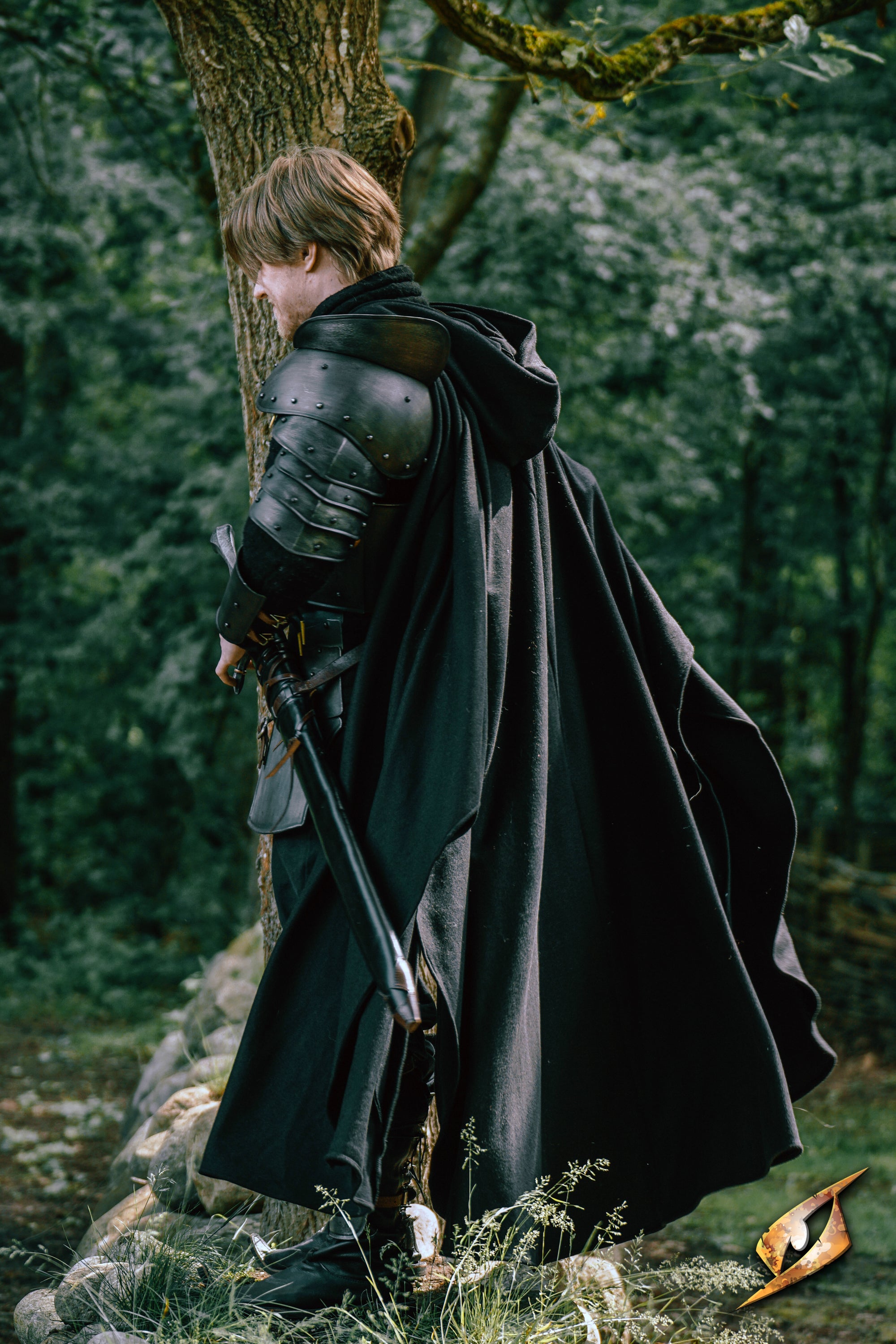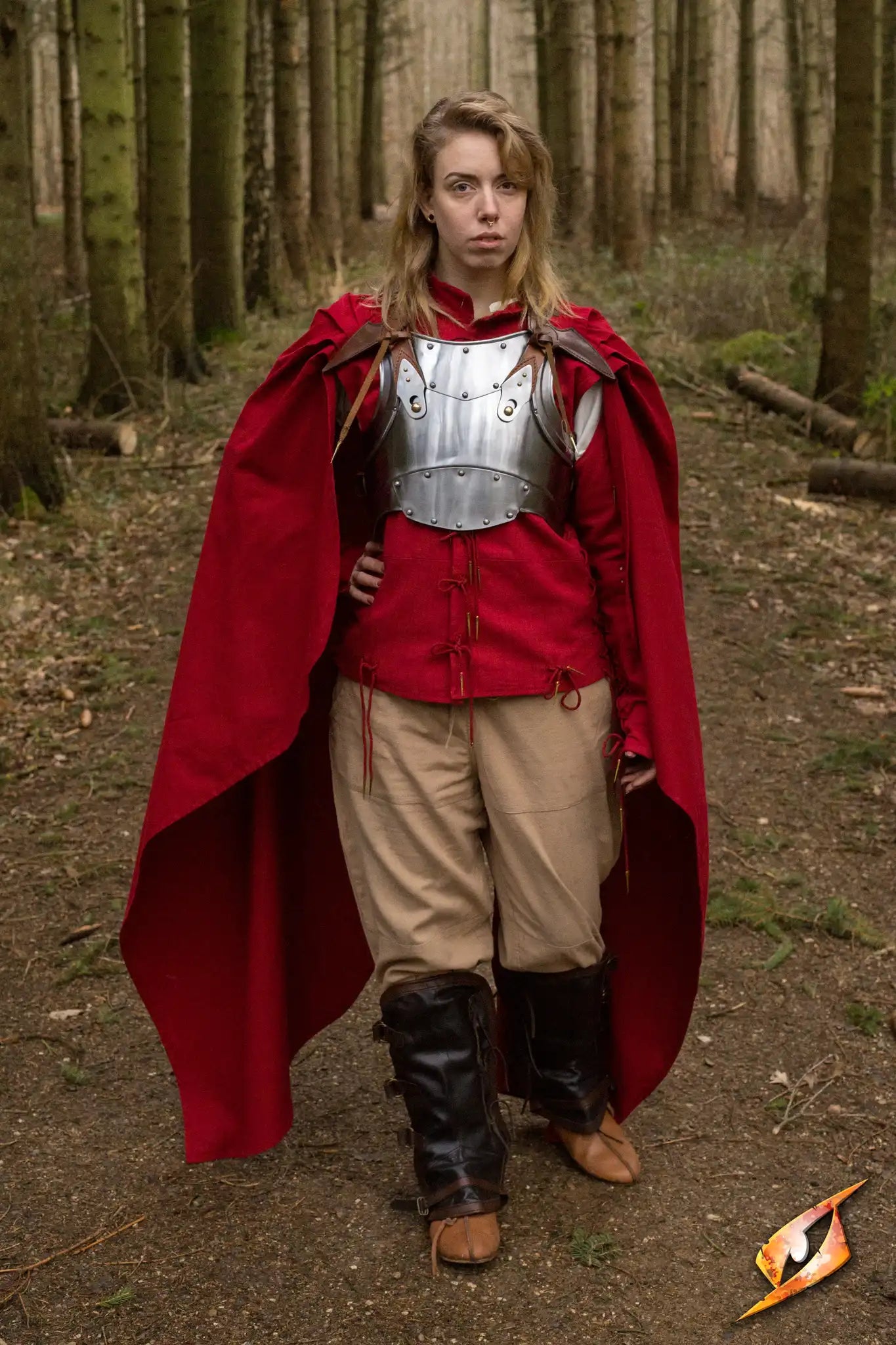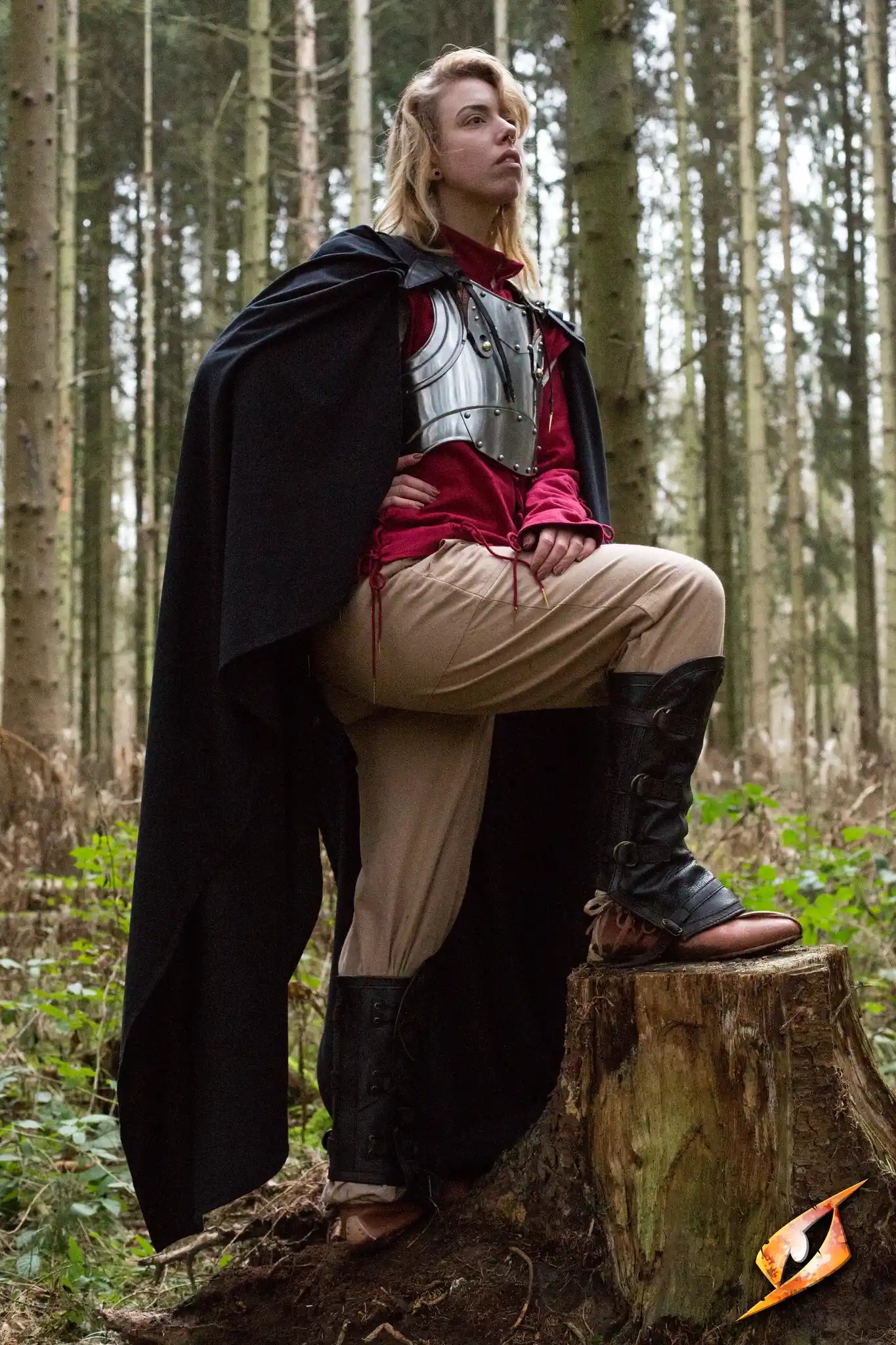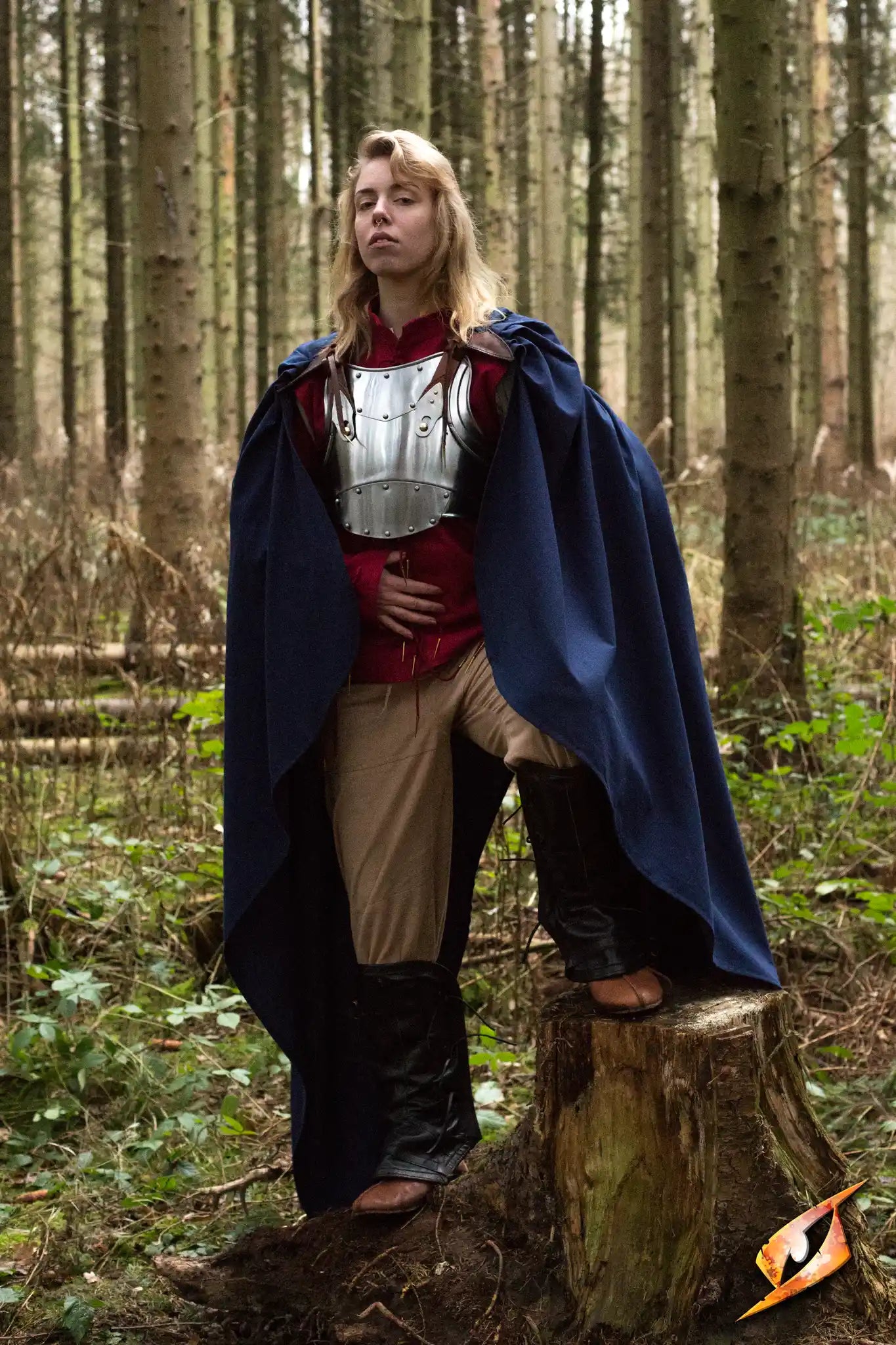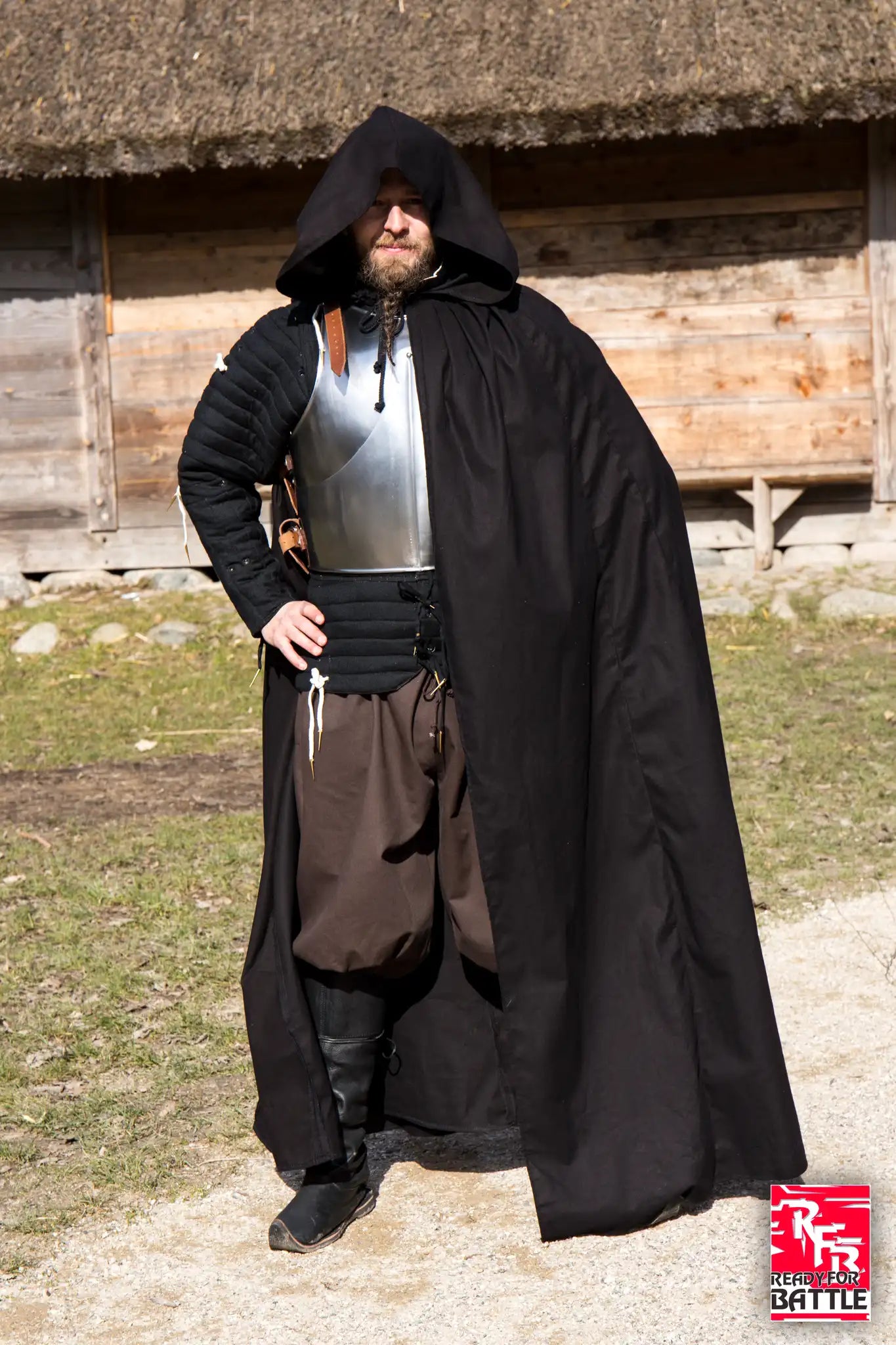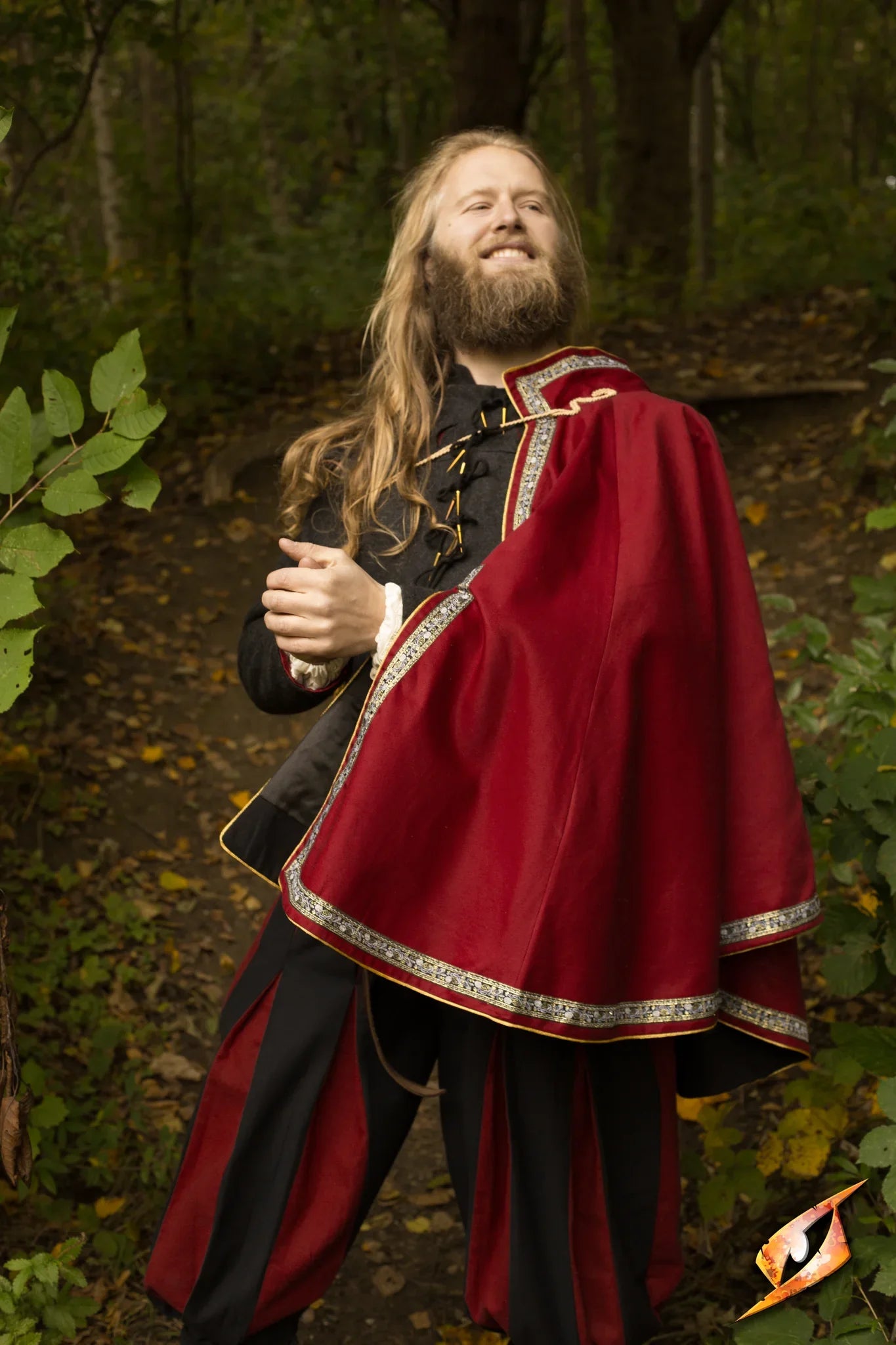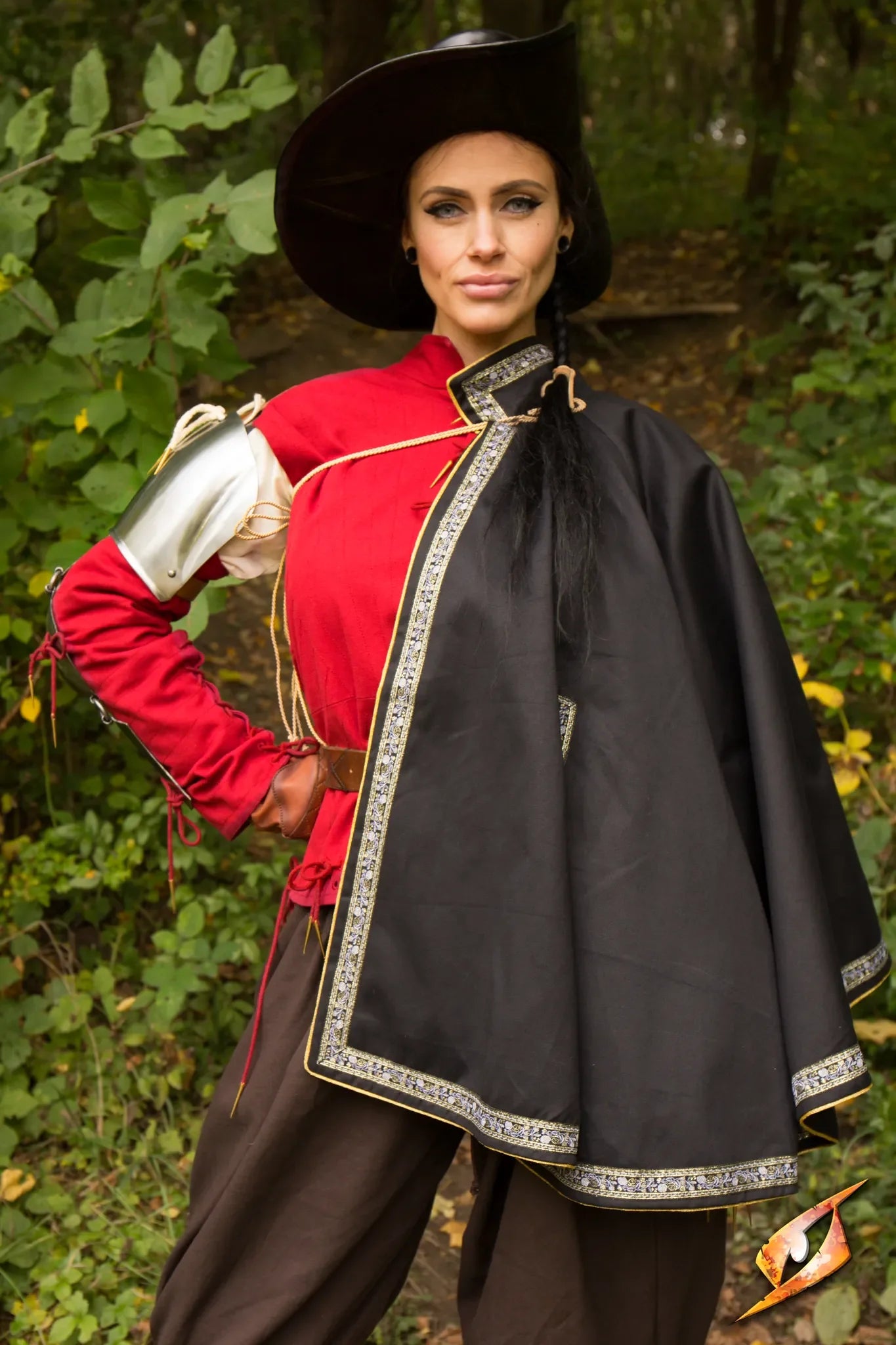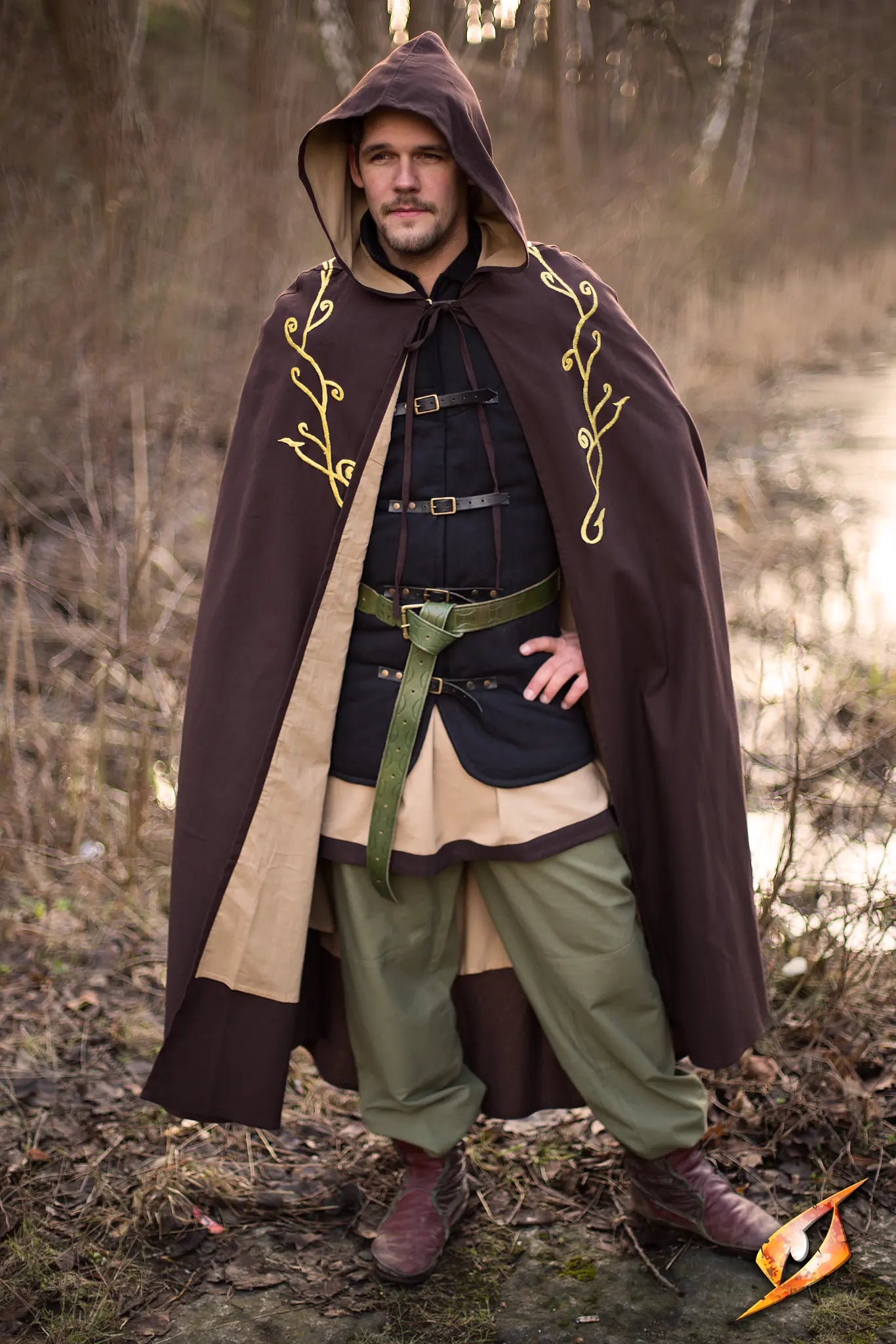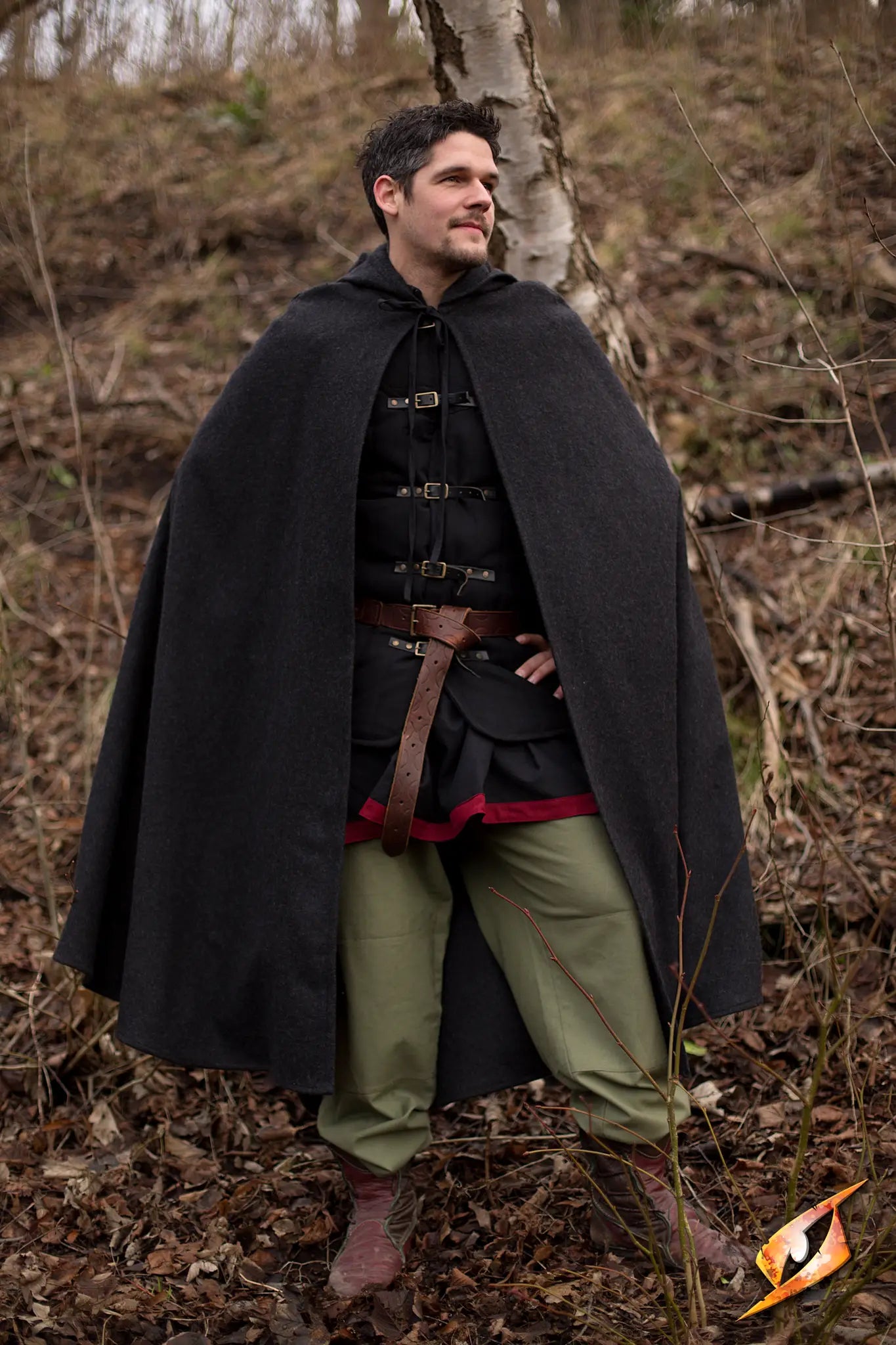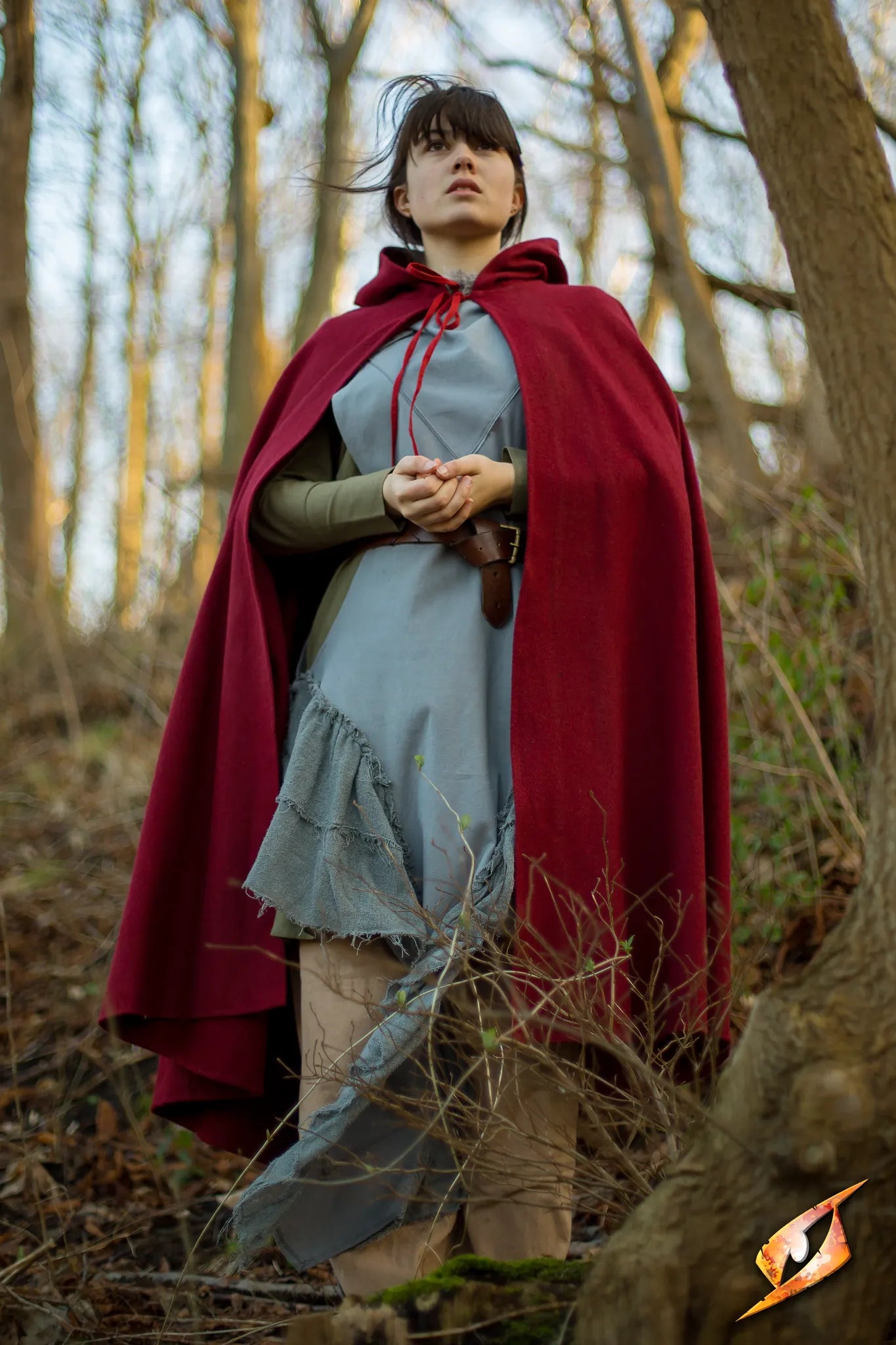Cloaks are part of the costume world’s foundation. You’ll find them at LARP events, on stage, in reenactments, and across fantasy media. But when someone says cloak, do they mean a full-length outer layer or something shorter? Are they actually referring to a cape, or maybe a mantle?
These garments share some features, but they aren’t the same. This article provides a clear overview of what defines a cloak, its differences from other outer garments, and its uses in both fantasy and historical costuming today.

Cloak vs Cape:
What’s the Actual Difference?
The terms “cloak” and “cape” are often used interchangeably. In some settings, especially fantasy and superhero media, that’s common. But there are a few key differences you’ll want to keep in mind when choosing or describing your costume.
Length
- A cloak is usually full-length. Most reach mid-calf or lower.
- A cape is much shorter. It usually ends around the waist or hips. Some may reach the thigh.
Coverage
- A cloak wraps around most of the body. It protects against the weather and provides privacy.
- A cape hangs behind the shoulders. It leaves the front of the body more open.
Function
- Cloaks are often practical. They provide warmth and coverage and help conceal armor, tools, or packs.
- Capes are more decorative. They add flair to a costume and allow more freedom of movement.
Cloaks often have hoods. Capes generally don’t, although that’s not a strict rule.
Character costume example:
If your character is a ranger who sleeps outside and carries gear, you’ll want a cloak.
If your character performs in court or relies on speed and agility, a cape might be more comfortable.
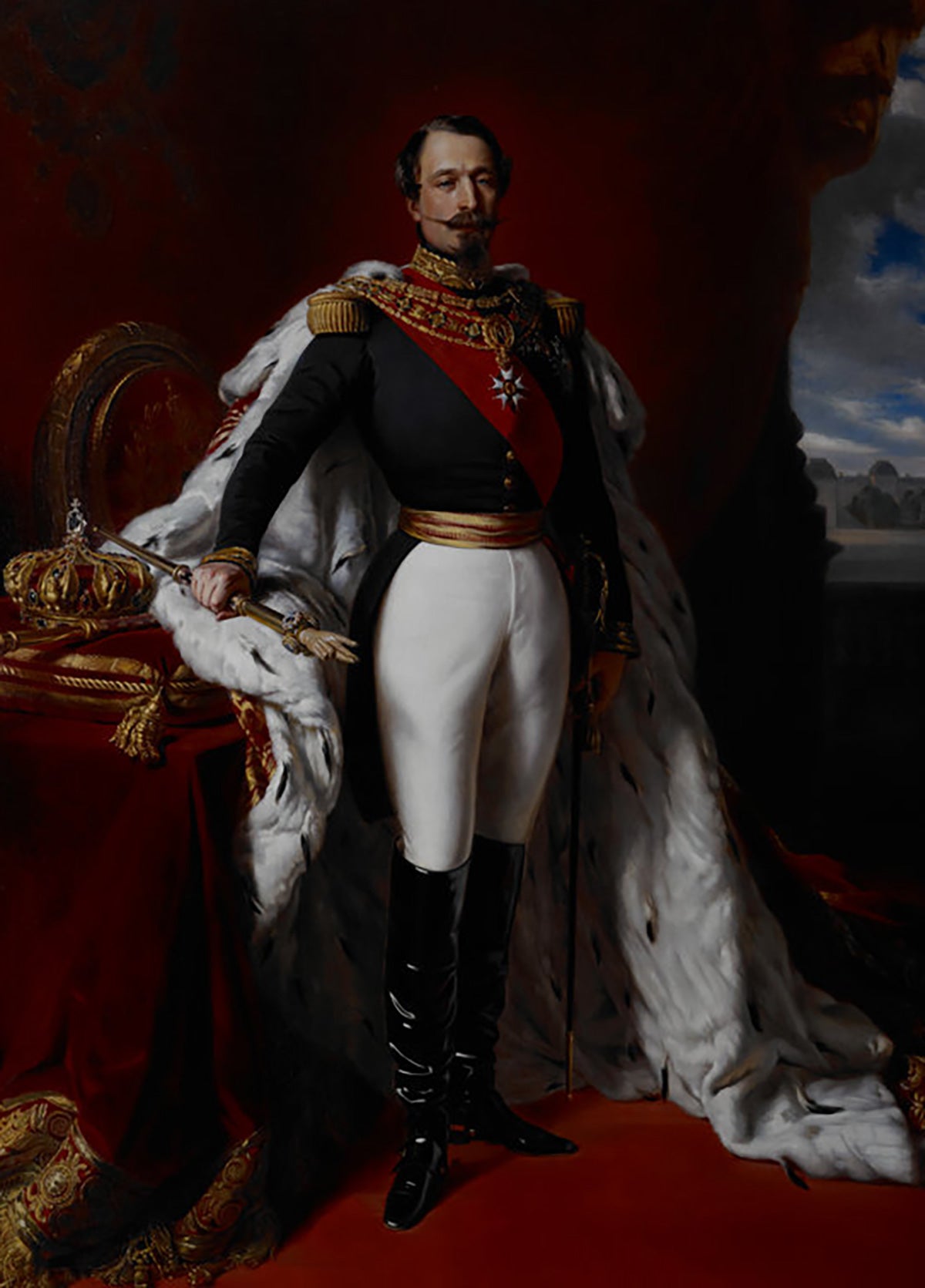
Yet another term:
What Is a Mantle?
A mantle is another type of outerwear that becomes conflated with capes and cloaks. It can be shorter or longer than a cloak and is dressier than a cape. The majority of mantles are worn only across the shoulders and arms. Mantles are made to fold comfortably over the back and sometimes breast, and most include collars, folds, or ornamentation.
Historically, mantles were used to describe rank or status. Nobility, clergy, and knights wore them. They were sometimes purely ceremonial, others flung over armor or robes. They were usually fur-lined or made of high-cost materials such as velvet or brocade.
As a functional component of a costume, a mantle adds a formal or noble element to a costume. You can don one over armor, a robe, or a tunic. It adds contrast and depth without the bulkiness or the length of a cloak.
Image credit: British Library archive, Foster 55
Why These Differences Matter
You don't need to know all of the historical terminology exactly right. But with an understanding of what separates these garments, you make more informed costume decisions. It serves your layering, comfort, and mobility.
The right choice begins with asking yourself who your character is: how they move, what they do, and how you wish them to appear. A wandering bard might need a cloak to sleep beneath the stars, while a noble could layer a mantle over elegant courtly armour.
Here’s what each option offers:
Cloak
- Maximum coverage
- Warmth and protection from the weather
- Conceals gear and shapes the silhouette
- Often includes a hood
Cape
- Lightweight and open
- Easier to move in
- Ideal for showing tunics, belts, or armor
- Adds visual motion and style
Mantle
- Ornamental and structured
- Adds status or elegance
- Works well for layering
- Good for indoor or ceremonial looks
Browse the epic armoury
Capes & Cloaks
Final Thoughts
Oh, it's all different. Cloaks are like the Swiss Army knife of items, practical, dramatic, a bit more. Capes are for the bold, the fast and the risky, the ones who require a little something extra without the weight. Mantles? Those are sophistication and prestige, exactly what you need if you're attempting to convince everyone that you actually do belong in the castle.
Bottom line: decide what you need your outerwear to do. You don't have a Ph.D. in medieval history; you simply have to pick what suits your appearance and game plan.


